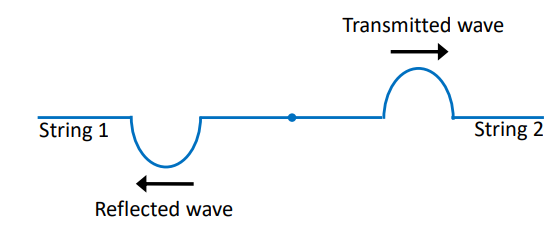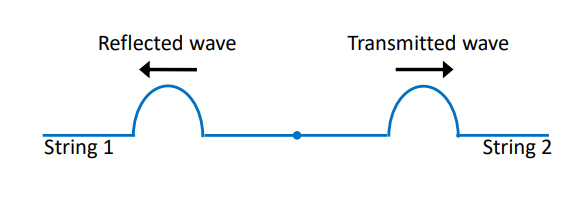PX154 - H2 - two strings joined together - transmission and reflection
introduction
- string 1, and string 2 are joined at
- the join is perfect
- mass per unit length of string 1 is
, and that for string 2 is - tension,
, and wave frequency, , are same in both strings - wave speed,
, is slower in the heavier string - the frequency,
, should be the same in both the strings, otherwise the waves will go out of phase and the strings will come apart - the wavelength,
, is shorter in the heavier string as is slower, and is constant
application
-
concepts apply elsewhere:
- light from one medium into another, eg: air to glass
- QM treatment of particles, eg: at potential step
- electrical signals in electronics
-
in general, expect three waves:
- incident wave:
- reflected wave:
- transmitted wave:
what happens at the join?
- boundary conditions:
- string is continuous (doesn't snap):
- tension is the same in both strings
- at the joint, the forces are equal
- string only moves in the transition
- consider PX154 - G1a - waves on a taut string for forces on an element of the string

- no change in gradient at the joint
- at
:
- using these conditions, the reflection and transmission coefficients,
and can be derived:
where,
observation
- for a wave approaching the join:

- if
: 
- if
: 
- if
: 
power transmission at the boundary
\1\n\2\n